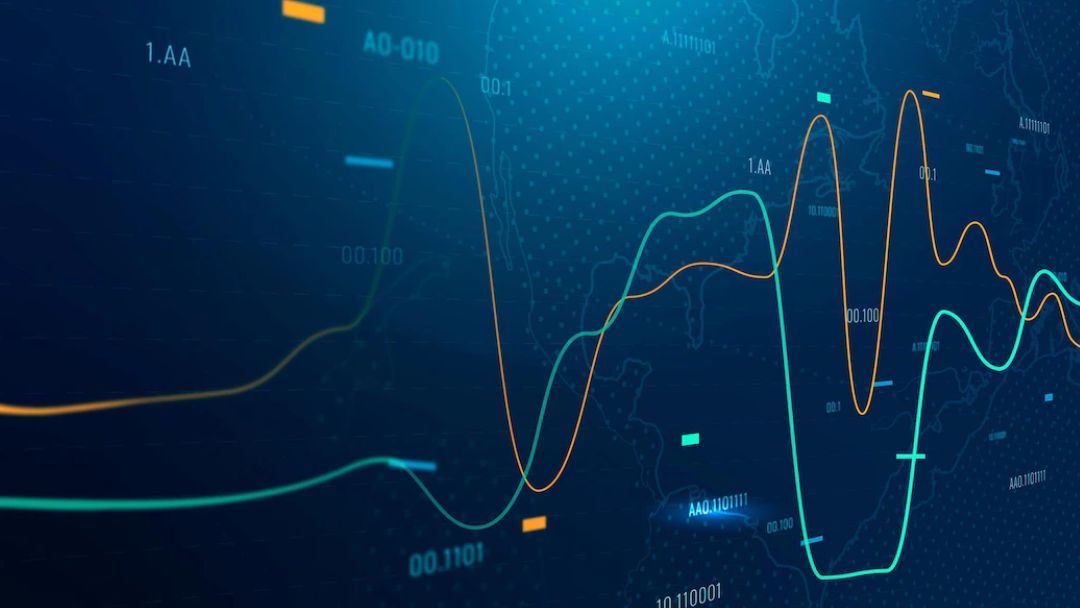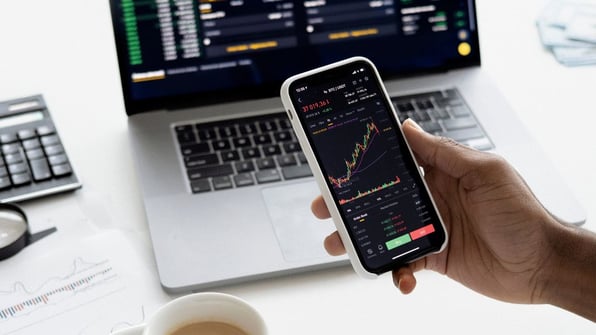Do you like the idea of trading on the stock markets without having to physically own the underlying assets you buy and sell? If this sounds like an interesting way to invest in the financial markets, you may want to consider learning about trading contracts for difference (CFDs).
With high leverage options and a variety of financial markets, there are a few things you need to consider before trading CFDs. Fortunately, if you're looking for a CFD trading guide for beginners, you've come to the right place.
Rizeapp gives you expert access to international markets where you can buy and sell assets safely without needing to be a professional investor. But before we jump into action, we want you to have some knowledge about the trading market.
Today we'll tell you what CFDs are and how they work so you can start investing safely and easily!
What is a CFD?
A contract for difference (CFD) is a contract between a buyer and a seller that stipulates that the buyer must pay the seller the difference between the current value of an asset and its value at the time of the contract.
CFD trading is a way of speculating on financial assets, such as trading stocks or investing in ETFs. However, CFD trading is a little different, because unlike investing in funds or stocks, the trader never owns the underlying market. Instead, he buys or sells a contract for difference.
In this regard, CFDs allow traders and investors to profit from price movement without owning the underlying assets. The value of a CFD contract does not take into account the asset's underlying value: only the price change between the entry and exit of the trade.
It is a method of making a long or short-term investment in an asset through a contract with a broker, rather than opening a position directly in a particular market. The two parties agree to replicate market conditions and settle the difference with the other party when the position closes.Characteristics of CFD trading
Here are the main features of trading Contracts for Difference:
- Initially, you do not need 100% cash or securities to trade. In most cases CFDs are leveraged products which we can buy or sell without having 100% of the resources and/or assets.
- There is no exchange of securities or the total amount of the transaction. CFDs are not an operation of buying and selling assets, but of settlement of differences between the initial and final price.
- No limitation in volume or the number of securities. Each CFD has a reference asset. The trader can trade on any number of CFDs (the broker can limit the number of CFDs to buy/sell on an underlying to avoid concentrating risk on any one asset).
- No expiry date, unlike futures. It is the trader who decides the end of the operation.
- To determine the overall result with CFDs, it is necessary to wait for the cancellation of the CFD. The sum of the price variations of each day (positive and negative) until the moment of cancellation constitutes the final result of the CFD agreement. It corresponds to the difference between the cancellation price and the initial price, always multiplied by the number of CFDs in the transaction.
- It is possible to agree on the delivery of the underlying asset on cancellation. When cancelling CFDs, it is possible to settle by differences or with the delivery of the underlying asset. Although this is not common, it is possible.
- You can adapt the amount you invest in CFDs (the contract size) to the size of your account or the maximum risk you want to take as an investor (ie. 0.1 lot, 0.8 lots, 1.3 lots).
How does CFD trading work?
CFD trading involves buying or selling a Contract for Difference.
To find out how CFD trading works, we will look at these key concepts:
- Profit or loss
The profit or loss of the CFD is given by the difference between the position's entry price and the position's closing price. Depending on the position taken, the trader will make a profit or loss if the price of the asset rises or falls. For example, instead of buying or selling physical gold, a trader can simply speculate on whether the price of gold will rise or fall.
Even if you don't know about the stock market, it is easy to understand that profit or loss is calculated with this simple formula:
*Profit or loss = (number of contracts x value of each contract) x (closing price - opening price).
The final net result will be determined by deducting commissions or other expenses like interest on financing.
The result can come from taking long positions or short positions:
- The trader buys (long position) and will collect the difference if the CFD price goes up and on the other hand will pay if the price difference goes down. Here the trader has a bullish expectation of the price of the underlying asset. If this expectation is not met, he will have to take the corresponding losses.
- The trader sells (short position) and will collect the difference if the price goes down, but will pay if the price goes up. In this case, the expectation is bearish for the price of the underlying asset.
Example 1, let's say we buy 200 CFDs of Imperial Brands at €3 ...
|
Start |
Cancellation |
|
|
Day |
15 February |
29 February |
|
Quote |
€3 |
€3,5 |
|
CFD Order |
Buy |
Sell |
|
Settlement |
(3.50-3.00) x 200 = €100 ... |
|
Day |
Quote |
CFD Order |
Settlement |
|
|
Start |
15 February |
€3 |
Buy |
|
|
Cancellation |
29 February |
€3,5 |
Sell |
(3.50-3.00) x 200 = €100 ... |
...and it went well, liquidating the position with a profit of €100.
Example 2, we now decide to go short on Self Bank selling 200 CFDs at €4 ...
|
Start |
Cancellation |
|
|
Day |
1st March |
15th March |
|
Quote |
€4 |
€4,5 |
|
CFD Order |
Sell |
Buy |
|
Settlement |
(4,00-4,50) x 200 = - €100… |
|
Day |
Quote |
CFD Order |
Settlement |
|
|
Start |
1st March |
€4 |
Sell |
|
|
Cancellation |
15th March |
€4,5 |
Buy |
(4,00-4,50) x 200 = - €100… |
...and it didn't go so well and I had to liquidate the position with a loss of €100.
Note: These are just examples, both long and short positions are valid to profit from the market.
- CFD Sizing
The size of a single contract depends on the underlying asset being traded. This allows CFDs to replicate how that underlying asset is traded in the market. This is possible because CFDs are traded in standard contracts or lots.
CFDs offer the possibility to trade a fraction of a share thanks to mini-lots or micro-lots. If we wanted to buy an AMZN share, we would need more than $3,000 for a single share; if, for example, our investment capital was $1,000, spot trading would be impossible. With CFDs, trading would be possible, depending on the broker, up to a fraction of 1/100 (0.01); this, in addition to the margins, makes it possible to trade securities whose value would otherwise not allow us to trade them.
- Duration of maturity in CFDs
They usually have no maturity. This means that we will have an open position until we decide to close it, either by reaching a target price profit or loss or if the available balance in the account is not enough to cover the margin to operate in that contract and the position is closed.
Thus we can say that we have an implicit option in favour of the CFD trader that gives him the right to exercise at will on the date that suits him best, this is known as a temporary option.
- The cost of CFD trading
Each CFD broker offers its transaction fees. It is therefore normal to find different ways of applying these costs related to our buying and selling operations:
- With spread
Generally and most commonly, no commissions are paid when buying and selling CFDs, but the spread is applied. The spread is the difference between the Ask (buy price) and the Bid (sell price). The broker is free to set the spread it deems appropriate and this spread is what it will charged as the cost of the transaction.
The result of trading a CFD is related to the spread. The wider the spread, the more you need the price to move in your favour, i.e. the higher the cost to cover.
- Brokerage commission on direct execution
In CFDs traded with direct execution on the organised market, brokers apply an explicit brokerage commission. This commission is usually a percentage of the total effective value of the trade. In addition, they charge the client an additional commission for bringing the order to the organised market (equivalent to the exchange fee and the costs of the clearing and settlement service).
- Brokerage commission on volume
There may also be cases where the broker additionally charges a brokerage fee on the volume of the trade but sets a minimum in money for each trade. This means that if the amount resulting from the product between the percentage applied and the value of the transaction does not reach a minimum amount, this amount will be charged.
Conclusions
What can I trade with CFDs?
There is a wide range of underlying assets on which you can trade CFDs:
- Indices
- Currencies
- Cryptocurrencies
- Commodities
- Equities
What a coincidence! Rizeapp allows you to trade all these assets in a single place. With transparent conditions, no fees, no hidden costs, tight spreads, and protection of negative balances, it is a good way to start investing, isn't it?
Now that you know the theory, it's time to take action!




